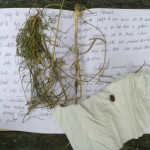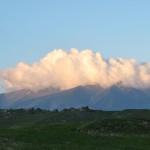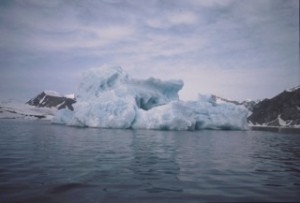 It’s been so beautiful this week. Perfect weather, warm and still, like a blessing. Thanks to a shoulder injury that means more than 4 hours at my computer is agony, I’ve been out in it too, far more than I would have been normally. Normally I would have been frantically working, trying to Get Everything Done because from next week I’m not really at home until the middle of November.
It’s been so beautiful this week. Perfect weather, warm and still, like a blessing. Thanks to a shoulder injury that means more than 4 hours at my computer is agony, I’ve been out in it too, far more than I would have been normally. Normally I would have been frantically working, trying to Get Everything Done because from next week I’m not really at home until the middle of November.
This is the calm before the storm. Next week I start six weeks of almost constant travel. Italy for the pordenonlegge festival, http://www.pordenonelegge.it/it/index_inglese.htmlthen Scotland for a Scottish Book trust tour, then sundry UK festivals (Bath, Cheltenham, Wells)followed by a tour of schools in Boston and New York State. I really love this part of my work – talking directly to children and to adults, reading my work, talking about the stories behind my books (as I always tell children every story has a story of how it became a story). So I’ll be telling audiences in Italy at the Pordenonelgge Festival about the real conservation stories behind each of the four ‘Heros of the Wild’ books, and about the people I met and the places I visited in the course of researching them.
I love taking photographs when I travel so I like to share those too sometimes, as long as technology – ipads/ projector screens – doesn’t take over. What’s most enjoyable for me, and seems to work best for my audiences, is the simplest of connections – talking, listening, answering questions without anything even approaching a power point presentation!
technology – ipads/ projector screens – doesn’t take over. What’s most enjoyable for me, and seems to work best for my audiences, is the simplest of connections – talking, listening, answering questions without anything even approaching a power point presentation!
Answering questions is actually one of my favourite things. Of course I often get asked the same ones – particularly as I talk about animals, I get asked ‘whats the biggest/smallest /scariest/ ‘ type questions and every writer gets asked ‘where do you get your ideas from’. I can honestly say with my hand on my heart that I NEVER, EVER get tired of answering the same things, because for the person asking, it’s a new question and I’m giving new information. The opportunity to deliver information to a young person who really wants to hear it is so precious, and inspiring the desire to ask questions is kind of the whole point of my writing life. I don’t want any book to be a dead end – whether its non fiction or fiction – I want my readers to know more, think more, ask more, imagine more, when they get to the end of one of my books.
One of the other things I love about working directly with live audiences is it gives me the chance to present things straight to audiences, without the gatekeepers of publishing getting in the way. I’m hugely grateful to my publishers – they make it possible for me to do what I do – but there are some things they don’t want to publish. So I can tell stories to live audiences that will perhaps never make it onto the published page. (The swift story that I wrote about in a blog earlier this year is one of those: kids love it, teachers love it, can I get it published? Nope.) I can road test things too, and see how they work, and I can try out ideas that may then work their way back into a book. One thing I’ve been doing with live audiences for more than 20 years now, is teaching kids how to sing like a humpback whale. The crazy thing about this is, that although humpbacks were the first whale I studied, I’ve never written about them. There’s so much more known about humpback song than when I saw my first humpy in (gulp) 1979 I really do want to do a book. It would be great to have a book to back up all those noises that kids all over the country and now all over the world have learnt in one of my sessions.
Writing is solitary and often dispiriting. Getting anything published is a struggle. Your best ideas are rejected. You favourite books fail to sell. But when you are in front of an audience its just you and them, nobody to get in the way, nobody to tell you what readers like. You can find out immediately for yourself and get instant feedback – and happily for me that feedback is always really good, really encouraging. And once in a while it’s astonishing, once in while I see the lightbulb coming on in the head of a child, and I know I’ve sparked something important that they are going to remember for a long time. Seeing live audiences of children, listening to their questions, seeing them taking in what I have to say reminds me of WHY I do this.
So here’s a little list of places where I’ll be over the next few weeks where you can come and say hello!
September 17th http://www.pordenonelegge.it/it/index_inglese.html
September 21st to 26th touring schools in Argyll and Bute with Scottish Book Trust
BATH CHILDREN”S LITERATURE FESTIVAL
October 3rd 10 -11am Toppings Bookshop in Bath
13.15 A Natural History Of The Unmentionable, The Guildhall, Bath.
October 4th 11am Natural Inspiration, Prior Park College Bath
SOCIETY OF BIOLGY CHILDREN’s EVENT
October 6th 5.30 The ICK Factor , Ipswich Museum
CHELTENHAM FESTIVAL
October 7th 13.30 School’s Event The Inkpot, Imperial Square Gardens
16.00 Fun at Four Picture Book Event The Studio, Imperial Square.
READING AND PAINTING, WITH JACKIE MORRIS
October 9th 12 noon onwards Number Seven bookshop and gallery Dulverton, Devon
WELLS FESTIVAL
October 16th 14.00 – 15.15 Wells Town Hall





































